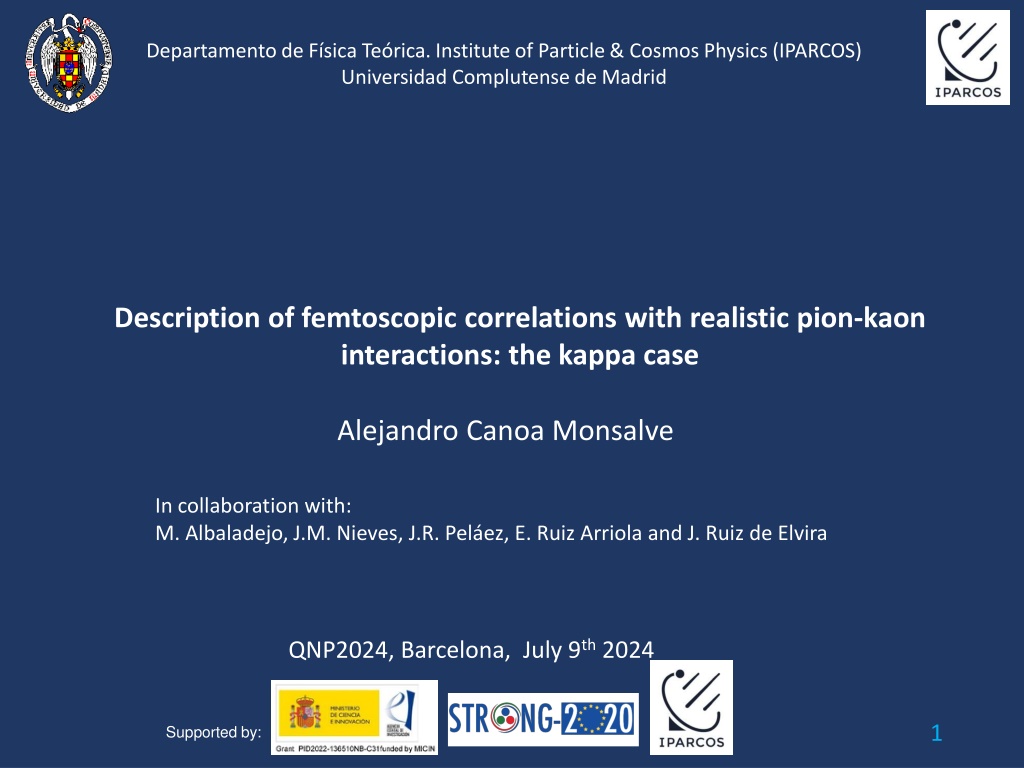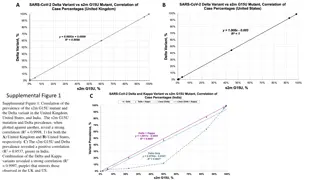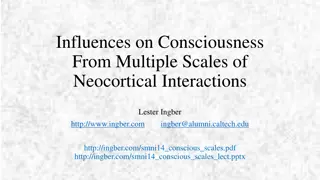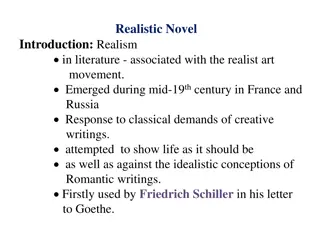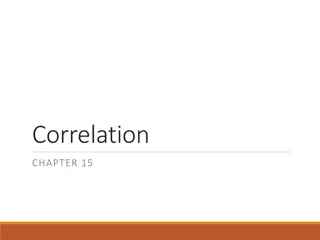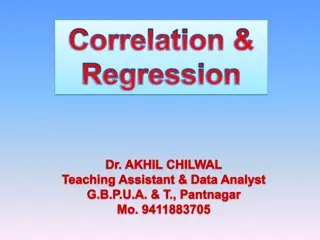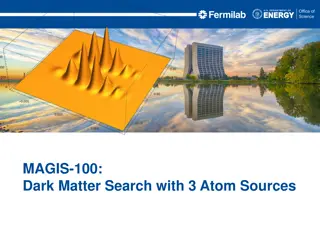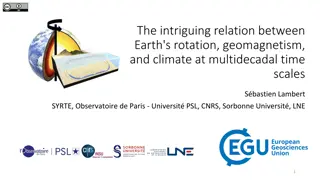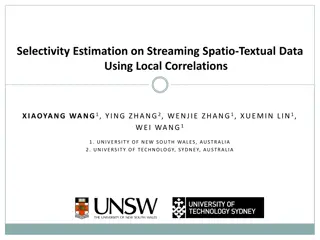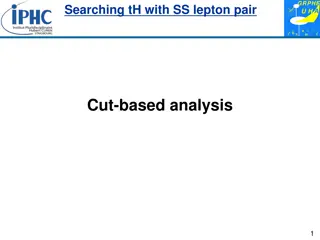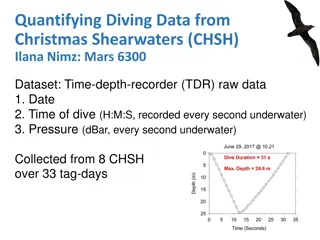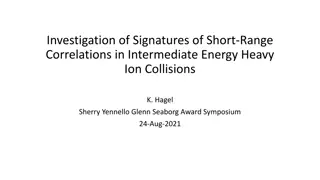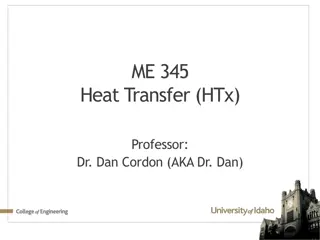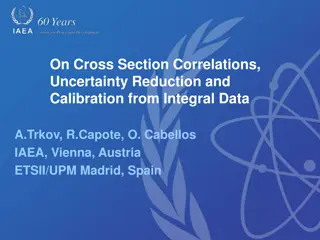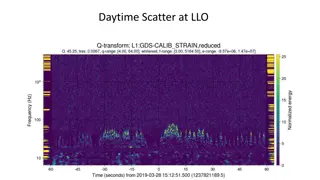Exploring Femtoscopic Correlations with Realistic Interactions: The Kappa Case
Study conducted at Universidad Complutense de Madrid delves into femtoscopic correlations using realistic pion-kaon interactions, with a focus on the kappa case. Theoretical models and experiments, including those at ALICE, are discussed, highlighting different fitting approaches and the impact of s-wave amplitudes. Our unique approach, incorporating both I=1/2 and I=3/2 isospin states, shows promising results in improving data accuracy.
- Femtoscopic Correlations
- Realistic Interactions
- Theoretical Physics
- Experimental Physics
- Isospin States
Download Presentation

Please find below an Image/Link to download the presentation.
The content on the website is provided AS IS for your information and personal use only. It may not be sold, licensed, or shared on other websites without obtaining consent from the author. Download presentation by click this link. If you encounter any issues during the download, it is possible that the publisher has removed the file from their server.
E N D
Presentation Transcript
Departamento de Fsica Terica. Institute of Particle& Cosmos Physics (IPARCOS) Universidad Complutense de Madrid Description of femtoscopic correlations with realistic pion-kaon interactions: the kappa case Alejandro Canoa Monsalve In collaboration with: M. Albaladejo, J.M. Nieves, J.R. Pel ez, E. Ruiz Arriola and J. Ruiz de Elvira QNP2024, Barcelona, July 9th 2024 1 Supported by:
FEMTOSCOPIC CORRELATIONS:@ ALICE Formalism originally devised to estimate the size of the source In nucleus-nucleus collisions (pp,Pb-Pb ) Observed correlations ????? Experimental effects 2
Example: arXiv:2312.12830v2 [hep-ex] 28 Dec 2023 BEAUTIFUL DATA and remarkable statistics !! Fit 1 Fit 2 Fit 3 Three different sets (different cuts) - P-wave and other effects removed with PYTHIA - Basically S-wave. 3
Usual (and ALICE) approach Theoretical model: Lednicky et al. formalism Assumptions Only s-wave amplitude ?(? ) is considered NR Lippmann-Schwinger approach for Factorization ? =1 ? is a correction to the free wavefunction 2symmetry factor ?1, ?2known analytical functions ? correlation strength parameterizes other sources of the pair ?,? fit parameters 4
ALICE approach for the ?? interaction Lednicky et al. formalism + an elastic Breit Wigner (BW) !! I=3/2 wave is neglected ??,? parameters of the interaction (fitted) Fit 1 Fit 2 Fit 3 ??(GeV) 0.833 0.015 ?(GeV) ALICE 0.890 0.025 Fit 1 Imcompatible with each other!! 0.804 0.014 0.801 0.033 Fit 2 + 0.044 0.765 0.013 Fit 3 0.714 0.039 5
Our approach 1. Minimum relativistic Fit 1 ?? 0.14 GeV, but ? up to 0.76 GeV 0.76 ? Need for relativistic corrections!! and the integral measure (Relativistic CF) ?1,?2play the role of ?1,?2 Replace propagators ALICE approach Supression due to ?1,?2,?1,?2terms 10-15% difference!! 6
Our approach 2. BW vs. realistic interactions ?+??combination of I=1/2 and I=3/2 isospin ?? states ALICE uses an elastic BW, neglecting I=3/2 wave ALICE incapable of reproducing the ?? scattering data 1 2+1 2?0 We use dispersive parametrizations of the s- wave isospin channels (Constrained Fits to Data, CFD*) 3 2= ????? ??= ?0 Significant improvement! Effect of the I=3/2 noticeable x4 bigger in ?+?? 7 *Pel ez, Rodas Phys. Rept. 969 (2022) 1-126
Our approach 2. Realistic interactions vs BW ALICE approach Realistic parametrization The effect of the realistic interaction is even more relevant than the relativistic corrections 8
Our approach 3. Our complete formula The normalization factor also appears in ALICE model implicitly (?) ?1and ?2come from the momentum integrals when we use the relativistic propagators. ???is the s-wave scattering amplitude of +?? ?+?? ??? is the off-diagonal amplitude +?? ?0?+,?+?? 9
Our results Just 3 parameters (?,?,?) vs 6 fit parameters in ALICE for each plot The interaction is fixed and the same for the three fits Inconsistent ??,? pairs from each fit in ALICE analysis 10
Our results ? Our results R(fm) ? ALICE R(fm) +0.0127 0.347 0.006 0.23 0.01 Fit 1 0.912 0.065 Fit 1 0.0783 0.0121 0.375 0.006 0.29 0.03 Fit 2 1.063 0.088 0.111 0.022 Fit 2 +0.163 +0.081 0.67 0.03 0.89 0.09 Fit 3 Fit 3 1.618 0.142 0.274 0.059 Radius of the source smaller than ALICE (2-3 times smaller) Bigger values of Different dependence of on R Different nature of the ? resonance? 11
Preliminary Diquark Tetraquark Our ?? 12
Summary ALICE provide high quality data and their hint of interesting feature in their femtoscopic correlations is very encouraging. We have improved their model taking into account relativistic corrections and realistic interactions The values of the radius obtained are smaller than typically expected, but non- relativistic frameworks dominate the literature. Lots of work ahead: Could we extract information of the interaction if the source parameters are known? Analysis of other cases (2 Kaons?) Could the femtoscopic formalism clarify the nature of the kappa? 13
Departamento de Fsica Terica. Institute of Particle& Cosmos Physics (IPARCOS) Universidad Complutense de Madrid Thanks for your time! QNP2024, Barcelona, July 9th 2024 Supported by: 14
Spare slides 15
Lippmann-Schwinger equation 16
? R(fm) 0.34703 0.00518 stat 0.00074(???) 0.2347 0.0091 ???? 0.0022(????) Fit 1 0.3749 0.059 ???? 0.0016(???) 0.2945 0.0139 ???? 0.0012(???) Fit 2 0.6667 0.016 ???? 0.0015(???) 0.886 0.062 ???? 0.027(???) Fit 3 17
